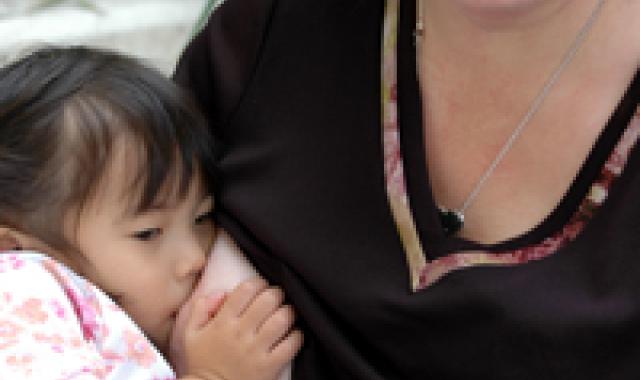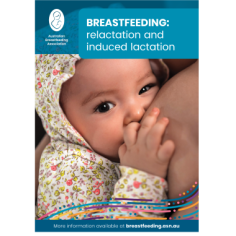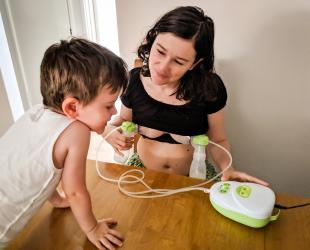Whether you have breastfed before or not, you can build a milk supply for your child.

Most people think that breastfeeding is only possible after a woman has given birth. However it's possible for a person to make milk even if they have never been pregnant.
If you are planning to adopt a child, you can enjoy a breastfeeding relationship with them. Whether you have breastfed before or not, you can build a milk supply and breastfeed your child.
Breastfeeding can be a very positive experience for both you and your child.
How does building a milk supply work?
During pregnancy, hormones including oestrogen, progesterone and prolactin prepare your breasts to make milk. However, prolactin by itself can cause breasts to grow milk-making structures and start making milk. This means that you don’t need to have been pregnant for lactation to happen. Prolactin is released when the nipples are stimulated, for example by a suckling child or a breast pump. Once the breast starts making milk, it is the milk being taken out that causes more milk to be made.
For a woman who restarts a milk supply at any time after being pregnant, this is called relactation. She can relactate for a child she gave birth to or for another child. If you have never been pregnant it is called induced lactation. Both are normal, natural processes.
Your adopted child may take time to breastfeed
Adoption is a stressful, even traumatic, event for a child and the mother is a stranger to her child. Breastfeeding is very intimate and your child may require some time to develop trust and attachment with you before they are comfortable with breastfeeding. This is especially the case for an older baby or toddler.
You will need to be gentle, respectful and persistent in offering breastfeeding to your child. In some cases, it may take several months or even more than a year before they are ready to breastfeed. You may need to be patient. Do not force your child to breastfeed as it doesn't work. Once children come to trust and bond with their new mothers, they often become keen breastfeeders.
Breastfeeding at all ages
Children from babies through to school age often actively seek breastfeeding with their new mother.
The emotional and developmental ages of older babies and young children may be much younger than their actual age, depending on their early life. Breastfeeding can help nurture the baby inside the older body.
While in Western cultures, mums often don’t breastfeed their babies for long, it is quite normal for children to breastfeed for several years.
Why breastfeed the adopted child?
Breastmilk is important for the health of any child. However, the most significant aspect of adoptive breastfeeding may be the physical act of breastfeeding.
Breastfeeding provides pleasure with their mother, skin-to-skin contact, hormone release and other factors that have a calming influence.
Mothers release prolactin and oxytocin (the "mothering hormones") and have a decreased response to stress.
Being able to comfort their child through breastfeeding helps mothers to build trust and bond with their adopted children.
For those thinking about adoptive breastfeeding, getting information and support for breastfeeding is extremely important. Learn as much about how breastfeeding works as you can.
Read some research:
Mental health, attachment and breastfeeding: implications for adopted children and their mothers International Breastfeeding Journal, 1996
Relactation: review of experience and recommendations for practice (WHO 1998)
© Australian Breastfeeding Association April 2022
Looking to relactate or induce lactation? Find out more
Evidence-led info and practical tips from our Special Situation Information Series
Breastfeeding: relactation and induced lactation





